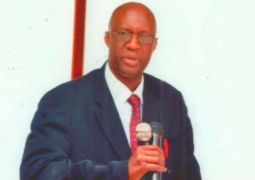The Governor of the Central Bank of the
Supported by the expected partial recovery in tourism and remittances, and robust growth in agriculture, Governor Saho stated, real Gross Domestic Growth is projected to remain strong.
Speaking at a press conference convened by the Monetary Policy Committee at the Central Bank's conference room yesterday, Governor Saho said economic activity in the West African region increased by 4.9 percent in 2009 but lower than the 5.8 percent in 2008.
He added that money supply grew by 19.4 percent in 2009 compared to 18.4 percent in 2008. Both components of money supply, he went on, increased with quasi money growing at a faster pace (30.3 percent) than narrow money (9.4 percent).
According to him, on the back of increased economic activity, commodity prices continue to increase.
"Crude oil prices rose from US$68.0 per barrel in September 2009 to US$79.0 per barrel in February 2010," he said.
Governor Saho noted that data on government budgetary operations in 2009 showed revenue and grants totalled D4.89 billion (22.2 percent of GDP) relative to D3.74 billion (20.9 percent of GDP) in 2008.
"Volume of transactions in the domestic foreign exchange market remained virtually unchanged at US$1.54 billion in January 2010 from a year earlier.
In 2009, the Dalasi depreciated against the British Pound by 7.2 percent, the US Dollar by 9.8 percent, the CFA by 11.2 percent and the Euro by 11.8 percent," he said.
He added that in January 2010, the Dalasi appreciated against the British Pound by 0.08 percent, the US Dollar by 0.02 percent and the Euro by 2.12 percent from end-December 2009.
On the banking industry, Saho noted that the industry's overall condition in terms of capital adequacy, liquidity and asset quality was satisfactory.
"The industry's average risk-weighted capital adequacy ratio was 18.1 percent at end-December 2009, compared to 33.22 percent in September 2009. All the banks observed the minimum requirement," he added.
Saho explained that according to the forward-looking business sentiment survey, respondents indicated that economic and business activity was higher in the fourth quarter of 2009 relative to the preceding quarter, and that prospects for the first quarter of 2010 are favourable. However, he added, the majority of the respondents expect the rate of inflation to be higher in the first quarter of 2010.
"End-period inflation, measured by the National Consumer Price Index (NCPI), declined to 2.4 per cent in September 2009 from 5.4 per cent in June before rising to 2.7 percent and 3.6 per cent in December 2009 and January 2010 respectively," he revealed.
Owing to the stability of the Dalasi and increased agricultural production, Governor Saho added, headline inflation is forecast to be in the range of 3.5 percent to 4.0 percent by the end of the first quarter of 2010.
The risks to the outlook, he noted, are the steady rise in global energy and food prices.




